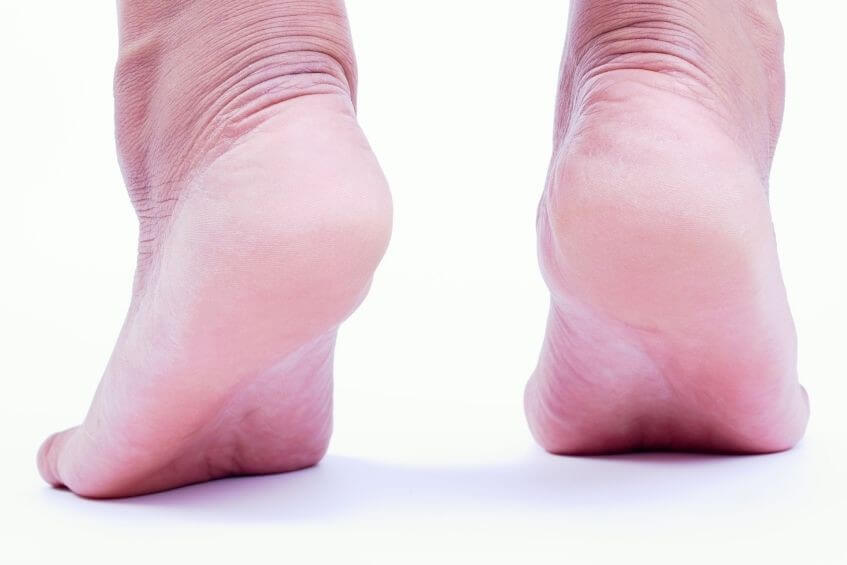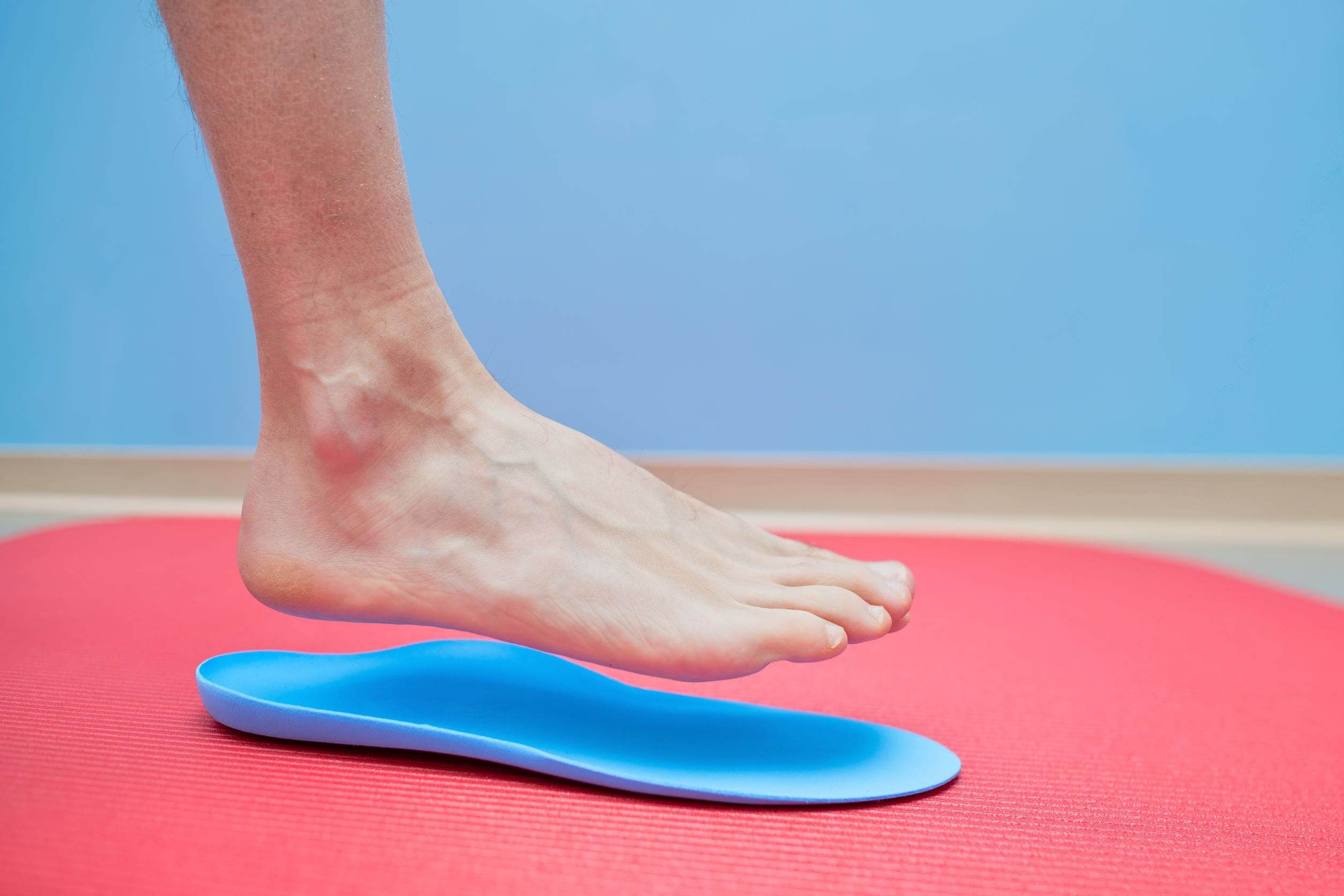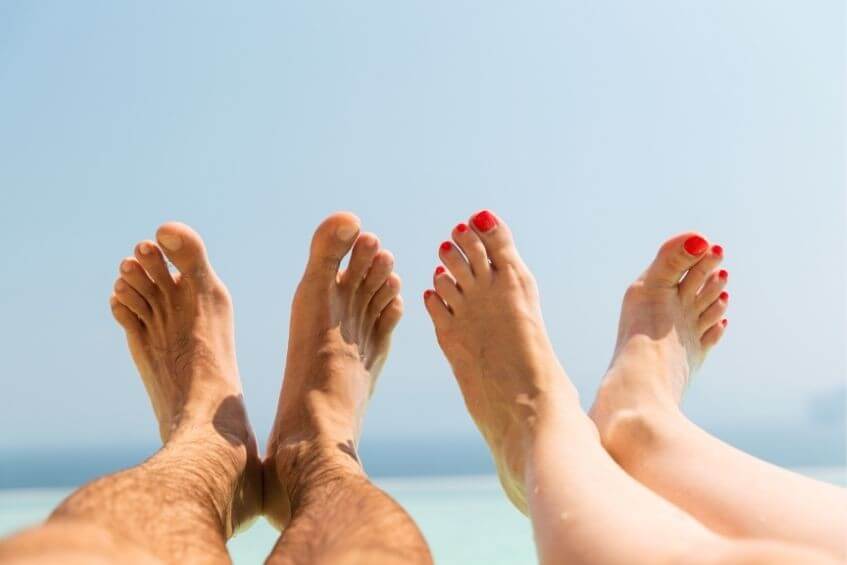
Jump to section
We see in-toeing and out-toeing foot positions in both adults and children. When it comes to kids, their feet go through many changes as
they grow, which often includes the in-toeing and out-toeing foot positions. Despite these being fairly normal variations in early childhood
and primary school years, this foot posture does raise concerns for parents who worry about what it could mean long-term and whether their
child’s ability to play sports, run and keep up with their friends is being impacted. Problems can arise if these foot positions
persist into adulthood. Here’s what you need to know about in-toeing and out-toeing.
In-toeing and out-toeing describe how the forefoot is positioned relative to the hindfoot (the heels).
In-toeing, which is often called ‘pigeon-toeing’, describes the front of the
feet rotating inwards, coming closer to one another when standing. This inwards rotation may be mild (slight) or very pronounced, and
may affect one or both feet. Generally speaking, the ‘normal’ period of in-toeing can range from the first steps up to
four years of age.

Out-toeing is the opposite of in-toeing, where the forefoot twists outwards away from the other foot. This is described as
being ‘duck-footed’ and generally resolves by the age of four or five. Both positions can help a child who is learning
to walk find their balance and improve their walking confidence.

In-toeing and out-toeing don’t really have ‘symptoms’ because they are more observations about a person’s foot posture rather than a medical condition. This is much like flat feet and high arches. The defining characteristics are the inward or outward rotation of the feet.
However, a rotated foot position may increase the risk of tripping and falling, and the muscles in the feet and legs may have to overwork
and compensate for the foot position. This may lead to aches or pains during repetitive movements such as running or playing sports.
Common causes of in-toeing can include:
If your shin bone (tibia) is twisting inwards below the knee, then the foot will also twist to face inwards, even if the position of the
foot relative to the lower leg is relatively straight. When we see this in children, it’s often related to the child’s position
when they were in the womb, and may only become noticeable once they start walking. Adults may have other causes for a shin bone
that’s turning inwards.
Metatarsus adductus describes a position where the front half of the foot
twists inwards on the back half of the foot, resulting in a bean or banana-shaped foot that gives the impression of in-toeing. Metatarsus
adductus affects approximately 1 in 1000 births. Read
more about it here.
You cannot spontaneously develop metatarsus adductus as an adult.
If your thigh bone (femur) is rotated inwards, your knee, lower leg and foot will also face inwards, creating in-toeing. One way to tell the difference between tibial torsion and femoral anteversion is the position of the knee - in femoral anteversion, the knee will tend to face inwards.
If you or your child is out-toeing, this may be due to:
When the shin bone is rotated outwards below the knee, the foot also rotates outwards, creating out-toeing.
When the thigh bone is twisted outward, the knee, shin, and foot are also positioned outward.
If the hip is rotated outwards, the leg and foot can also be rotated outwards. This outward hip rotation is often associated with muscle
tightness and contractions and with the position in the womb.
Having flat feet creates more of an appearance of of out-toeing than actually
having out-toeing itself. As the feet roll in and the toes point outwards, resulting in the feet that are appearing to be out-toeing.
Both in-toeing and out-toeing are natural variations in childhood that can be experienced by any child, although a child’s position
when in the womb can also influence the positioning and rotation of their feet and legs. The tendency to in-toe or out-toe may also run in
families. In adulthood, sources include surgery on the hip, knee or foot to conditions or circumstances associated with muscular tightness
or weakness.
Both in-toeing and out-toeing can be confidently diagnosed by your podiatrist
following a physical exam and observing a person’s gait and foot posture. As part of the diagnosis, your podiatrist will also help
identify where the in-toeing is coming from and use this information to guide your treatment plan.
The best approach to treatment depends on a person’s age and symptoms. Young children who are in-toeing or out-toeing but do not have
any pain or problems with their gait often do not require treatment, as the majority of cases will go on to resolve by the time they are in
their early primary years.
If a child’s foot position is causing them to regularly trip or hurt themselves, the foot position has persisted into adolescence or adulthood, or it is causing pain at any age, then treatment may be recommended. Your podiatrist can help you manage your in-toeing and out-toeing by:
You can book with one of our podiatrists in Brisbane City or Newmarket here.

Our feet are the foundation for the entire body, so it's important that they have enough strength to tolerate our activity levels. Use
these three exercises to help strengthen your feet.

Not everyone needs orthotics, but they can play an integral role in treating or relieving pain in several foot and lower limb conditions.

The heat and humidity of an Australian summer makes it a prime time for issues to arise, so our newest podiatrist Lucy has put together
seven helpful tips to keep your feet healthy and problem free throughout summer.
| Monday | 7:40am - 6:00pm |
| Tuesday | 7:40am - 6:00pm |
| Wednesday | 7:40am - 6:00pm |
| Thursday |
7:40am - 6:00pm |
| Friday | TEMP CLOSED |
| Saturday | CLOSED |
| Sunday | CLOSED |
Ground Floor, 344 Queen Street,
Brisbane City QLD 4000
| Monday | 7:40am - 6:00pm |
| Tuesday | 7:40am - 6:00pm |
| Wednesday | 7:40am - 6:00pm |
| Thursday |
7:40am - 6:30pm |
| Friday | 7:40am - 5:00pm |
| Saturday | 7:40am - 4:30pm |
| Sunday | CLOSED |
Newmarket Village, 114/400 Newmarket Rd, Newmarket QLD 4051